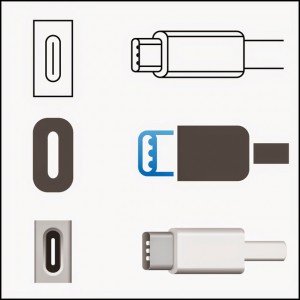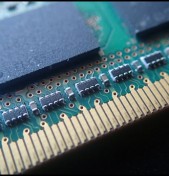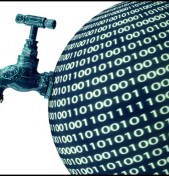 The news from our IT support specialists is that you might as well accept the facts, all of you Mac Computer devotees: The new USB Type-C port that is featured on Apple's new MacBook is here to stay. The advanced Type-C connector follows the standard Type-A USB port and the Type-B micro-USB port.
The news from our IT support specialists is that you might as well accept the facts, all of you Mac Computer devotees: The new USB Type-C port that is featured on Apple's new MacBook is here to stay. The advanced Type-C connector follows the standard Type-A USB port and the Type-B micro-USB port.
The big difference here is power. The standard Type-A port has a power output of five volts, where the new Type-C can pump out a whopping 20 volts. Likewise, where the Type-A port is larger, the new port trims the Type-A’s size nearly in half, coming in at 0.83cm by 0.26cm, allowing Apple to make thinner, lighter laptops.
And as a bonus, the new Type-C USB port features a reversible connection – there is no “upside down” on this one!
Redefining Versatility
But all that just scratches the surface on the new port’s versatility. The MacBook’s Type-C USB ports allow it to transfer data, charge devices and charge the MacBook itself, as well as facilitating linkage to external display via the video out function.
Cool stuff huh!! Ahh, but there’s a catch: You are going to need some new adapters to use your existing cables!
Of course, the aime here (and part of Apple’s master plan) is that you will go wireless and switch to something like iCloud, Continuity, AirPlay, AirDrop, AirPrint and the like.
But by way of throwing users a bone, Apple is also no longer blocking certain types of accessories, meaning you can now carry a USB Type-C external battery that could be used to charge up your MacBook when power is running low.
Before you panic, though, let’s take a stroll down memory lane. This isn’t the first time Apple has changed horses in the middle of the rodeo.
- · Back in 1998 the company dropped the floppy disk drive from the iMac, and everyone freaked out.
- · In 2008, Apple dumped the CD drive and the Ethernet port when it rolled out the original MacBook Air.
So We Adapt
Now to be sure, there are still times when we wish we had one or the other, but those times are becoming less and less frequent as we have adapted, right? And that is what will happen this time too. What seems like a massive paradigm shift will soon be just a memory.
Meanwhile, we adapt, right. As in, adaptors! Plugging in a standard USB drive will require an adapter, as will plugging in your iPhone or iPad using Apple's USB to Lightning cable that came in the box.
Of course, Apple is selling several USB-C adapters, which means you can use most of your current cables and accessories with the new MacBook. Eventually, though, manufacturers will adapt as well, and new incarnations of MacBook accessories will feature the new Type-C USB connection.
 Over 50,000 customers served!
Over 50,000 customers served!




